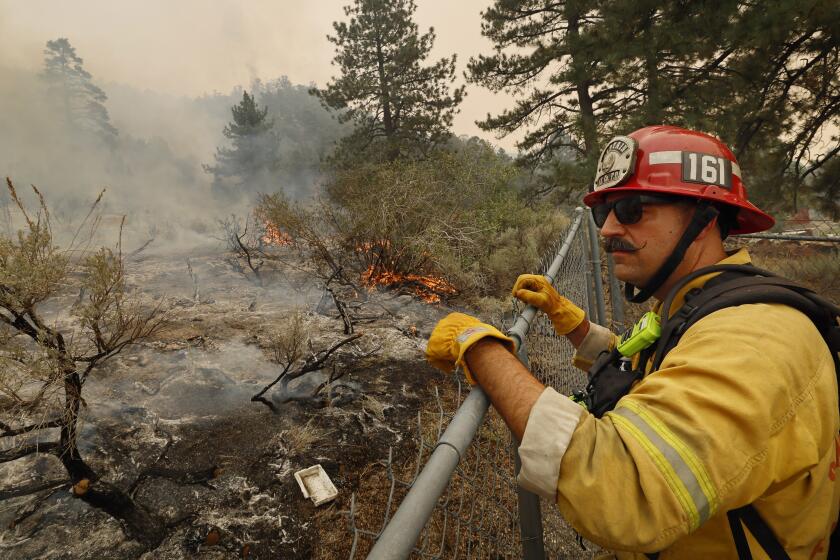Huntington Beach police turn to Facebook to help identify woman killed in 1968
Her body was found face down in a drainage ditch in an open field. Her throat was slit and she had been sexually assaulted.
On March 14, 1968, detectives in Huntington Beach would begin a 42-year search to identify the victim, later dubbed “Jane Doe” — and the person who killed her.
Monty McKennon, 82, remembers the case well. For 12 years, it sat on his desk, McKennon and his team the only advocates for the answers to the mystery. McKennon, who spent 24 years with the Huntington Beach Police Department, recalled how long it took to bury the woman’s body.
“We had her on ice for a long time,” he said. “Every time we started to bury her, someone would claim they knew who it was.”
But the case never went anywhere. Until now.
After reopening the mystery several times, police turned to Facebook in an effort to put a name to the woman’s face. What they learned — quickly — was that a key piece of evidence police had followed for decades was nothing more than a false lead.
When the woman’s body was found, some boys playing in a nearby oil field came across a white purse containing a wallet and a collection of black-and-white photographs, including a snapshot of a young boy wearing a cowboy hat.
For years, detectives assumed the pictures were family members or friends of the slain woman and hoped if they found them, they might be able to unlock the mystery.
On Tuesday, police posted a composite drawing of the woman, photos of the purse, a matching wallet and seven photographs, six of them that were found tucked inside the wallet.
Overnight, the department received 50 to 60 phone calls, dozens of e-mails and 16 comments on its Facebook page. It became clear the purse and photos had no connection to the woman.
“We talked to the people who were actually in the pictures,” said Lt. Russell Reinhart, a department spokesman.
Jane Doe’s body was discovered by several children playing in an open field near Newland Street and Yorktown Avenue, a neighborhood now dotted with homes.
The woman was white or Latina, 20 to 25 years old, about 5 feet 4 inches tall and had dark hair.
Shortly after the grisly discovery, a Long Beach nurse’s aide came forward claiming the victim was a 23-year-old woman named Rhonda Fischer from Hollywood, the first in a series of false identifications.
In 2001, the Orange County crime lab created a DNA profile of the killer, using evidence from the scene. But authorities have not found a match.
Stephanie Rohrbach, 27, said when she browsed the Facebook page Tuesday night, she became convinced that one of photos from the purse was of her grandfather and his brother. She immediately e-mailed the photo to her father with her iPhone.
“When I saw the picture, I just started shaking because it was like I’d seen a ghost,” said Rohrbach, who lives in Tucson.
Reinhart said Wednesday afternoon that Rohrbach was wrong and that the photo was not her grandfather and great uncle. But he said the department welcomed the calls and e-mails. Facebook and other social media will be utilized for cold cases in the future.
“We’re confident we’ll be doing it more,” he said.
Reinhart said ruling out the purse in the 1968 case is significant.
“It takes that piece of the puzzle away,” he said.
Reinhart said the department now has new and workable leads into the woman’s identity.
Meanwhile, McKennon, who has since moved to Washington, said the case has never left his mind.
“We went door-to-door,” he said. “We tried everything we could think of.”
He said certain things will trigger the memory of the case.
Every time he hears the name Jane Doe, he thinks of the woman in Huntington Beach, the one whose killer has yet to be found.
Anyone with information is asked to call Det. Mike Reilly at (714) 536-5940.
More to Read
Sign up for Essential California
The most important California stories and recommendations in your inbox every morning.
You may occasionally receive promotional content from the Los Angeles Times.











